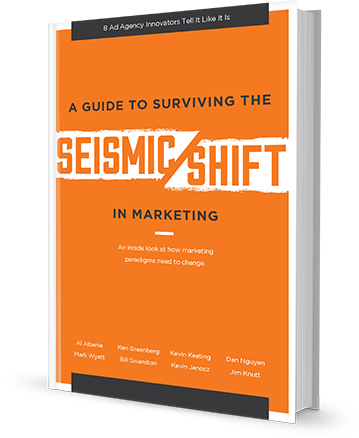High-tech marketers that are focused on generating new leads may want to revisit their search engine marketing (SEM) strategies. SEM essentially allows you to earn, or buy, the attention of those searching for companies like yours by using relevant keywords (SEO) or paid search (like Google AdWords). While you may think you already have a solid SEM program, it never hurts to refine it once in a while.
Here are three ways to update and improve your search engine marketing strategy today:
1. Enhance Your Meta Descriptions
Organic SEO is just one half of a strong SEM strategy (the other being paid), but it is critical for ensuring customers can find your high-tech company through. Most companies make a concerted effort to include relevant keywords in their web content. However, one of the most common oversights is not optimizing meta descriptions for each page of a website. For some reason, many marketing professionals still believe they don’t matter. They do!
All websites should include well-crafted meta descriptions focused on relevant keywords and helpful information that will entice searchers to click.
2. Use Paid Search Ad Extensions
Ad extensions provide a more direct call to action that can enhance the content of your paid ad. There are quite a few types of ad extensions available, each with a unique purpose. Here are some that may be useful for high-tech marketers:
• Call Extensions: A clickable phone number appears, making it easy for potential customers to call without searching for a number
• Click-to-message Extensions: Similar to the above, customers simply click to message without the hassle of looking up contact information
• App Extensions: A link that allows users to download your app from Google Play or the Apple Store.
• Review Extensions: Displays third-party reviews in the form of stars. This can be useful for promoting high-tech products and services that lack broad consumer awareness.
Ad extensions can make your ad more appealing while also increasing their usability. According to Google, click-through rates increase by 30% or more for ads with site links compared to those without. So, the question isn’t why would you use them, but why wouldn’t you?
3. Fine-Tune Your Mobile Strategy
Mobile usage is more robust than ever before, and the majority of users are poised to act on the information they find. Reason enough for your high-tech company to concentrate its marketing efforts, and budget, on optimizing for mobile usage.
The ad extensions listed above are key to driving mobile conversions, but there are other areas where you can focus your efforts. Make sure the information you display is highly relevant and easy to use. Add screen functions such as auto-complete and auto-correction of misspellings to increase usability and keep customers on your site. Consider adding dropdown menus that make forms easy to complete along with auto-zoom functions for precise entries. These simple tweaks can make interacting on the small screen less painful and more productive for potential customers, ultimately increasing conversions.
According to Google, 90% of mobile users take some action as a result of a Google search. Making the process easier will result in more purchases and user-initiated contact.
Bill Swanston is a Partner and Executive Creative Director at Frederick Swanston and this article originally appeared on his blog, Tech Southern Fried.
Here are three ways to update and improve your search engine marketing strategy today:
1. Enhance Your Meta Descriptions
Organic SEO is just one half of a strong SEM strategy (the other being paid), but it is critical for ensuring customers can find your high-tech company through. Most companies make a concerted effort to include relevant keywords in their web content. However, one of the most common oversights is not optimizing meta descriptions for each page of a website. For some reason, many marketing professionals still believe they don’t matter. They do!
All websites should include well-crafted meta descriptions focused on relevant keywords and helpful information that will entice searchers to click.
2. Use Paid Search Ad Extensions
Ad extensions provide a more direct call to action that can enhance the content of your paid ad. There are quite a few types of ad extensions available, each with a unique purpose. Here are some that may be useful for high-tech marketers:
• Call Extensions: A clickable phone number appears, making it easy for potential customers to call without searching for a number
• Click-to-message Extensions: Similar to the above, customers simply click to message without the hassle of looking up contact information
• App Extensions: A link that allows users to download your app from Google Play or the Apple Store.
• Review Extensions: Displays third-party reviews in the form of stars. This can be useful for promoting high-tech products and services that lack broad consumer awareness.
Ad extensions can make your ad more appealing while also increasing their usability. According to Google, click-through rates increase by 30% or more for ads with site links compared to those without. So, the question isn’t why would you use them, but why wouldn’t you?
3. Fine-Tune Your Mobile Strategy
Mobile usage is more robust than ever before, and the majority of users are poised to act on the information they find. Reason enough for your high-tech company to concentrate its marketing efforts, and budget, on optimizing for mobile usage.
The ad extensions listed above are key to driving mobile conversions, but there are other areas where you can focus your efforts. Make sure the information you display is highly relevant and easy to use. Add screen functions such as auto-complete and auto-correction of misspellings to increase usability and keep customers on your site. Consider adding dropdown menus that make forms easy to complete along with auto-zoom functions for precise entries. These simple tweaks can make interacting on the small screen less painful and more productive for potential customers, ultimately increasing conversions.
According to Google, 90% of mobile users take some action as a result of a Google search. Making the process easier will result in more purchases and user-initiated contact.
Bill Swanston is a Partner and Executive Creative Director at Frederick Swanston and this article originally appeared on his blog, Tech Southern Fried.


